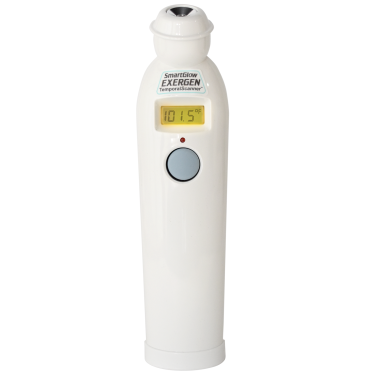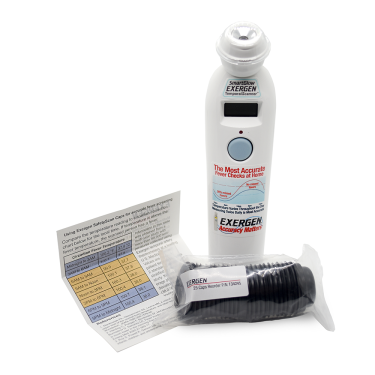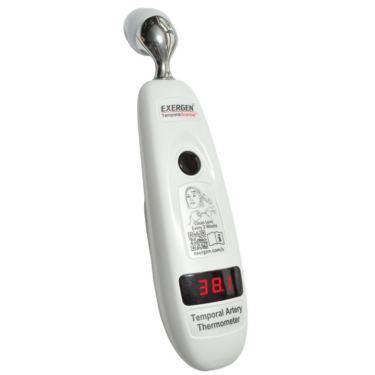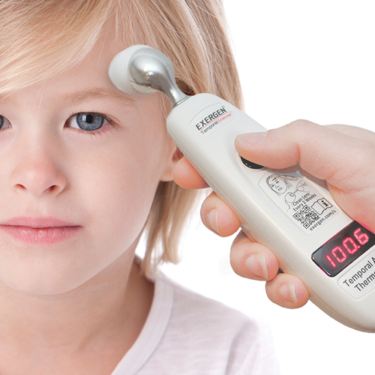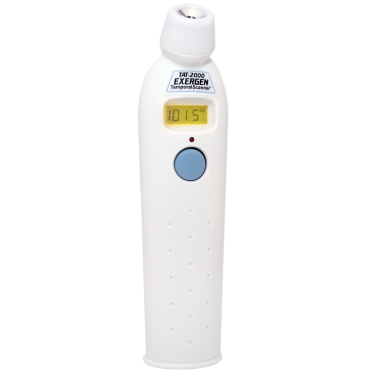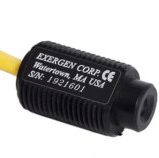Fever was known as a vital sign to ancient Egyptians at least 5000 years ago, using the hand as measuring instrument. Galileo invented the first thermometer 500 years ago. Carl Wunderlich, ‘Father of Clinical Thermometry,’proposed 98.6°F (37°C) as the mean normal temperature 140 years ago. Until very recently we have been taking patients’ temperatures more or less the same way for more than 100 years, circa 10 billion measurements per year worldwide (approximately half in the US). Can we improve on what we have been doing for thousands of years and countless billions of times? Emphatically yes.
Today’s patient expectations
Importantly, today there is a much higher patient expectation of non-invasiveness. After all, the 10 billion temperatures mean a similar number of probe insertions into a body cavity, causing discomfort and unnecessary indignity, as well as some risk of harm. Patients undergoing cancer treatment are grateful for a reprieve from things that hurt, when their temperature is taken with the latest non-invasive methods. It is not uncommon today for a parent to refuse to permit a rectal thermometer to be used on their child.
Non-invasiveness is unachievable if the vital sign lacks the necessary clinical accuracy. The scientific and engineering challenge is to accurately measure the temperature inside, from the outside. From medical science we have learned that certain external locations have useful properties for ascertaining internal temperature.The ear, for example, has a 50-year history of investigation for thermometry, and in the last 20 years devices developed on this principle have been widely used. Although perhaps less invasive than older methods, inserting a probe into an ear is not what patients consider non-invasive. Further, there are accuracy problems, particularly with small children.
Back to the future
As inventor of much of the ear thermometer technology in use, Exergen was asked by physicians to reconsider non-invasive thermometry, since ear thermometers were not an acceptable solution to the patients’ requirement for non-invasiveness and the clinicians’ requirement for accuracy. Within this context we re-examined the medical science of fever assessment, going back not 50 years, but 5000 years, to the hand on the forehead.
Although never precise enough for clinical accuracy, laying a hand on the forehead provided useful fever indications under certain conditions, and was safe, gentle and a reassuring caress for the patient. Preserving these desirable attributes while making the measurement robust and reliably accurate for clinical use for all ages was the challenge. Our mathematical models indicated we needed to find an easily accessible external skin surface with high and consistent perfusion. We found this property at the superficial temporal artery, where it traverses the forehead. A measurement modality was developed based on scanning the temperature of the skin over the temporal artery, and with proprietary algorithms we could then accurately compute the internal core temperature, for all ages, under essentially all clinical conditions.
In the past five years Temporal Artery Thermometry has become widely accepted and is responsible for about 0.5 billion temperatures per year by medical professionals in the US, a very good start in reducing the number of probe insertions into body cavities and improving the clinical experience for both patients and clinicians. About two million consumers have home versions for their personal use.
Future with zero cost and zero waste
An unexpected benefit of Temporal Artery Thermometry is that without insertion into a body cavity there is no requirement for disposable probe covers, and simple wiping is adequate. Thus, future operating budgets for thermometry in institutions using only Temporal Artery Thermometers are zero. Furthermore, with disposable waste eliminated, the institution contributes significantly to ‘green’ operations, while reducing storage space and handling costs. In the past two years, US institutions have saved approximately $40 million in disposable costs, and 3000 tons in disposable waste. With Temporal Artery Thermometry initial cost is about the same as other thermometry devices available and acquisition cost is usually less than one year of disposables cost, thereby not requiring capital budgeting.
Francesco Pompei is founder and CEO of Exergen Corporation, and holds 60 US patents in non-invasive thermometry for medical and industrial applications. Earning BS and MS degrees from MIT, and SM and PhD degrees from Harvard, Pompei also holds an appointment as Research Scholar in the Department of Physics at Harvard in cancer research.
